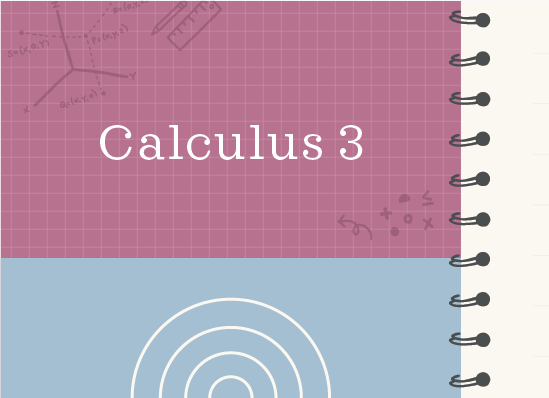Spherical coordinates in three-dimensional coordinate space
Defining spherical coordinates in three-dimensional space
Like cartesian (or rectangular) coordinates and polar coordinates, spherical coordinates are just another way to describe points in three-dimensional space.
Hi! I'm krista.
I create online courses to help you rock your math class. Read more.
Rectangular coordinates are given as ???(x,y,z)???.
???x??? is the distance of ???(x,y,z)??? from the origin along the ???x???-axis
???y??? is the distance of ???(x,y,z)??? from the origin along the ???y???-axis
???z??? is the distance of ???(x,y,z)??? from the origin along the ???z???-axis
Spherical coordinates are given as ???(\rho,\theta,\phi)???
???\rho??? is the distance of ???(\rho,\theta,\phi)??? from the origin, ???\rho\geq 0???
???\theta??? is the angle between ???r??? (the shadow of the line connecting ???(\rho,\theta,\phi)??? to the origin) and the positive direction of the ???x???-axis
???\phi??? is the angle between the line connecting ???(\rho,\theta,\phi)??? to the origin and the positive direction of the ???z???-axis, ???0\leq\phi\leq\pi???
To convert between spherical coordinates and rectangular coordinates, we will need to use the formulas
???x=\rho\sin{\phi}\cos{\theta}???
???y=\rho\sin{\phi}\sin{\theta}???
???z=\rho\cos{\phi}???
and
???\rho^2=x^2+y^2+z^2???
How to convert between spherical coordinates and rectangular coordinates
Take the course
Want to learn more about Calculus 3? I have a step-by-step course for that. :)
Converting a rectangular coordinate point to a spherical coordinate point, then a spherical coordinate point to a rectangular coordinate point
Let’s try an example where we convert rectangular coordinates to spherical coordinates.
Example
Convert the rectangular coordinate point to a spherical coordinate point.
???(0,0,1)???
We’ll start by plugging ???(0,0,1)??? into ???\rho^2=x^2+y^2+z^2???.
???\rho^2=0^2+0^2+1^2???
???\rho^2=1???
Since ???\rho\geq 0???, ???\rho=1???
We’ll plug ???(0,0,1)??? and ???\rho=1??? into ???z=\rho\cos{\phi}??? to solve for ???\phi???.
???z=\rho\cos{\phi}???
???1=(1)\cos{\phi}???
???\cos{\phi}=1???
???\phi=0,\ 2\pi???
Since ???0\leq\phi\leq\pi???, ???\phi=0???
We’ll plug ???(0,0,1)???, ???\rho=1???, and ???\phi=0??? into ???y=\rho\sin{\phi}\sin{\theta}??? to solve for ???\theta???.
???y=\rho\sin{\phi}\sin{\theta}???
???0=(1)\sin{(0)}\sin{\theta}???
???0=(1)(0)\sin{\theta}???
Since we have ???0??? on the right-hand side, ???\theta??? could be any value and the equation would still be true. This makes sense, since the given point is on the ???z???-axis, and ???\theta??? is the angle between ???r??? (the shadow of the line connecting ???(\rho,\theta,\phi)??? to the origin) and the positive direction of the ???x???-axis.
Since it can be any value, let’s just choose ???\theta=0???.
Putting these values together, we can say that the spherical coordinate ???(1,0,0)??? is the same as the rectangular coordinate ???(0,0,1)???.
Let’s try an example where we convert spherical coordinates to rectangular coordinates.
Like cartesian (or rectangular) coordinates and polar coordinates, spherical coordinates are just another way to describe points in three-dimensional space.
Example
Convert the spherical coordinate point to a rectangular coordinate point.
???\left(1,\pi,\frac{\pi}{2}\right)???
We know that
???\rho=1???
???\phi=\frac{\pi}{2}???
???\theta=\pi???
Plugging these into the conversion formulas, we get
???x=\rho\sin{\phi}\cos{\theta}???
???x=(1)\sin{\frac{\pi}{2}}\cos{\pi}???
???x=(1)(1)(-1)???
???x=-1???
and
???y=\rho\sin{\phi}\sin{\theta}???
???y=(1)\sin{\frac{\pi}{2}}\sin{\pi}???
???y=(1)(1)(0)???
???y=0???
and
???z=\rho\cos{\phi}???
???z=(1)\cos{\frac{\pi}{2}}???
???z=(1)(0)???
???z=0???
The rectangular coordinate ???(-1,0,0)??? is the same as the spherical coordinate ???(1,\pi,\pi/2)???.







